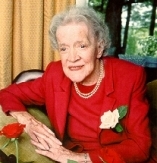The Devil in the White City by Erik Larson garnered much popular attention and critical acclaim after its publication in 2003. The book juxtaposes the World’s Columbian Exposition of 1893 against a series of mysterious disappearances and salacious murders that took place in the Windy City around the same time. The debauchery of the imposter Dr. Henry Holmes, who hailed from a small town in New Hampshire, highlighted the underside of urban life – anonymity, disorder, and outright evil. In contrast, or perhaps in response, the architect Daniel Burnham made it his mission to design a fairground that would come to be known as the White City. Giving rise to the city beautiful movement, the project was premised on the belief that soaring stately architecture, neat orderly landscapes, and essential civic institutions could elevate the morals of the urban masses. Despite the mammoth undertaking assumed by Burnham under daunting constraints of deadline and budget, the world’s fair was an amazingly popular success, rising to the level of cultural icon. It not only commemorated four centuries of progress, albeit almost all of it defined materially, since the arrival of Columbus and his fellow Europeans in the New World; it also marked Chicago’s ascension from prairie outpost to the nation’s second city and leading exemplar of the acquisitive spirit of the Gilded Age. Dr. Holmes did not fare so well in either the scales of justice or annals of history.

